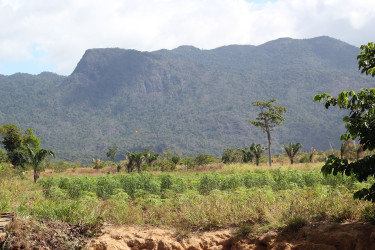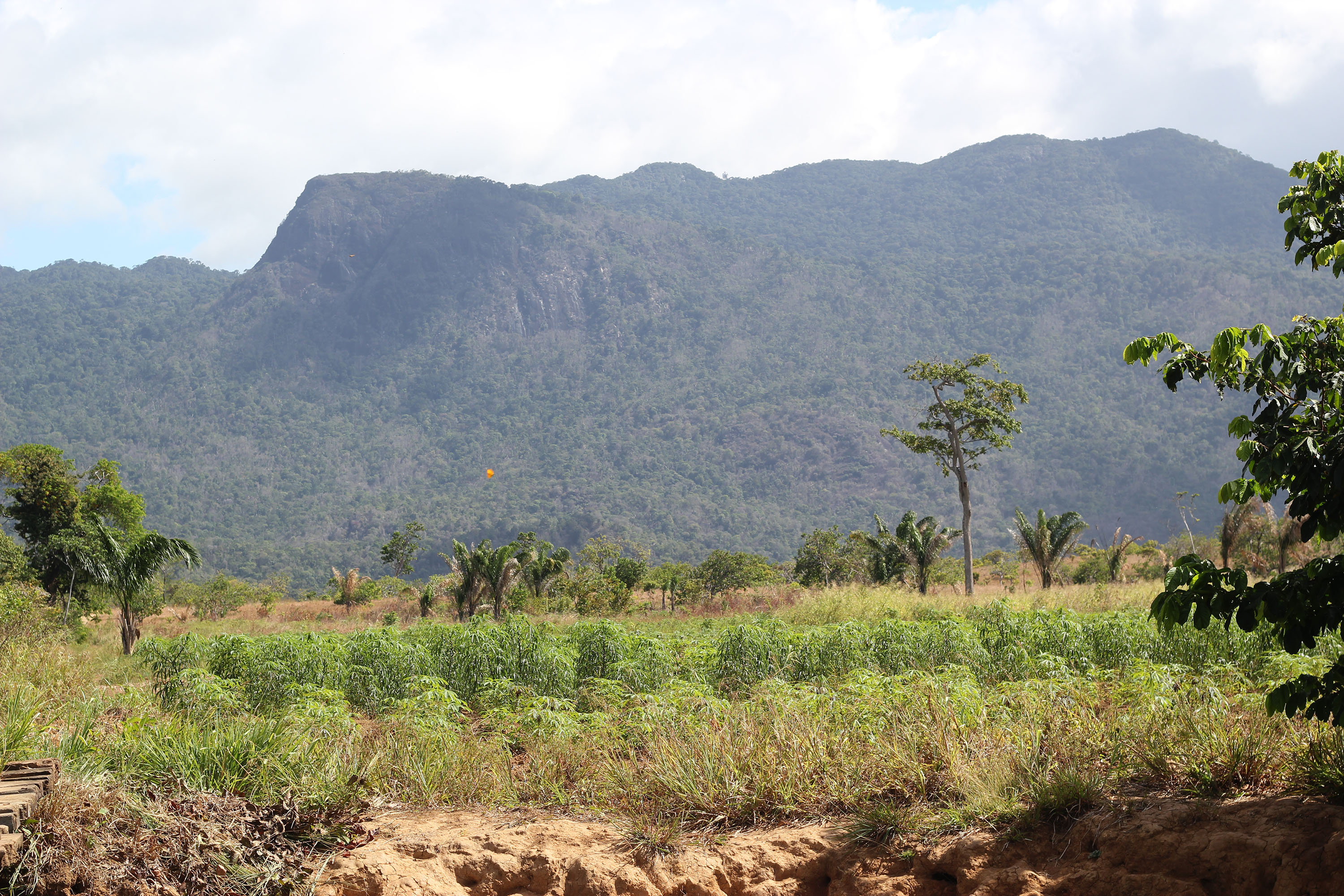Last month, as her cassava crop wilted in the unforgiving heat, Marlene Mandokin descended from her farm in the forests at the foot of the Kanuku Mountains and cleared a small plot of savannah close to the Moco Moco creek, hoping the water there would be enough to cultivate new crops.

“All our produce, all dry up,” she lamented, checking the empty rain gauge in her yard, the heat from the sun wilting the leaves on orange trees in her yard in Moco Moco, Region Nine recently. “Our cassava getting soft in the middle,” she said, describing the tuber as “corky” which essentially means that the cassava gets dry and soft when it should normally be firm and have ample moisture.
The “corkiness” of the cassava crop has been reported elsewhere in the vast savannah region as a prolonged dry season linked to El Nino weather phenomenon bakes the Rupununi. Rivers, creeks, lakes, ponds and wells have dried up, crops have died or are dying and livestock roam miles in search of water.
“I’ve visited the farms, sometimes you only see sticks, no leaves in these farms, all the leaves drop off so we know we’ll have a food shortage,” Region Nine Chairman Bryan Allicock told Stabroek News in an interview. The climate is changing he said, citing reports from scientists. Each year, the dry spells in the Rupununi are getting longer and there is need for long-term solutions, he


